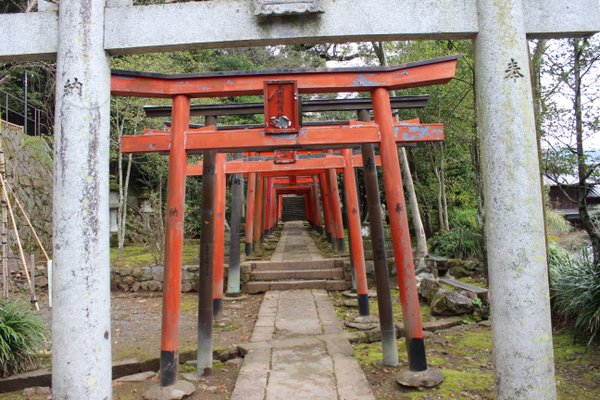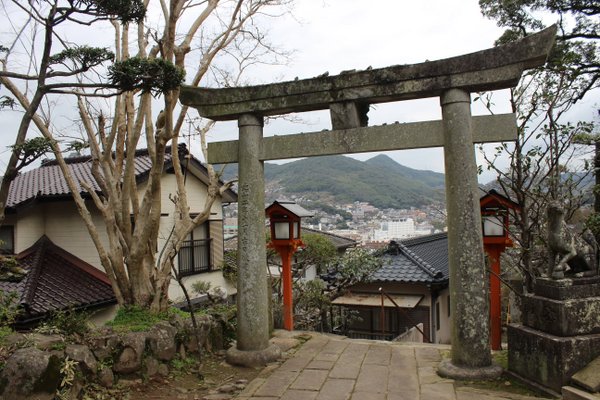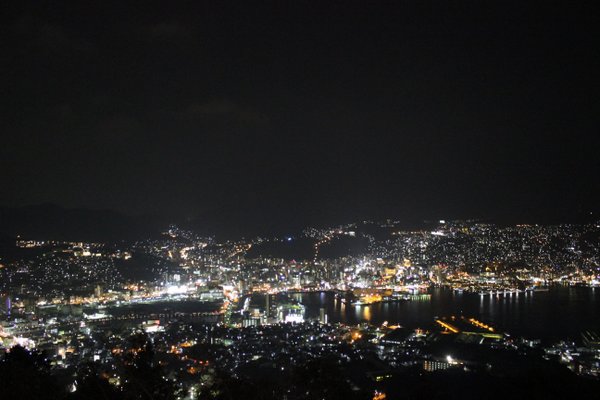Exploring Nagasaki Posted by sasha on Nov 30, 2016 in Uncategorized
The city of Nagasaki (長崎) is located on the Japanese island of Kyushu (九州). It’s the capital and largest city in the prefecture of the same name. Once a secluded fishing village, it grew into a major port city after trade developed with Portugeuse explorers. It was here that the second atomic bomb was dropped during WWII, killing tens of thousands of people. Since then, the city has been rebuilt and reinvented. Let’s explore this important Japanese city and learn about some of its most famous sights.
Dejima (出島)
Our journey around Nagasaki begins with a bit of a history lesson. Dejima is an artificial island in the bay of Nagasaki that was built in 1636 to both accommodate and constrain the European traders. It was partly to give them a place from which to trade, but also to prevent them from spreading their religion via missionary work. The Portuguese would soon be banned from the country entirely. This was during Japan’s isolationist period known as Sakoku (鎖国 – lit. “closed country”). The Dutch alone were spared from the ban, but they had to move their trading post from Hirado to Dejima. It’s no longer an island, as the surrounding area was reclaimed in the 20th century. It is now a Japanese national historic sight, which you can visit by taking Tram 1 and forking over 510 yen for an entrance ticket.
Suwa Shrine (諏訪神社)
This major shrine has quite the backstory. Its origins date back to 1619, which just so happened to be the same year that the shogun Tokugawa Ieyasu (徳川 家康) issued an edict against Christianity. At that time, the people of Nagasaki were predominantly Christian, and they had destroyed most of the Shinto shrines and Buddhist temples. The shogun and his government began forcing people to reconvert to these more traditional Japanese religions. A small shrine had been built, but it was frequently attacked by resisting Christians. Eventually, the large Suwa Shrine was constructed. All people were required to register at the shrine; failure to do so would out you as a Christian and lead to punishment.
A short clip of the festival from 2013.
A festival called Nagasaki Kunchi (長崎くんち) was also developed here to attract attention and encourage locals to participate at the shrine. The festival continues to this day in early October and features large dance perfomances by the city’s different districts. Each district only participates once every seven years, so the festival is quite different on a year-to-year basis. Just beware that it’s incredibly popular and difficult to get tickets for, so you’d better plan ahead if you’d like to see it.
Kazagashira Park (風頭公園)
Situated atop a hill with a beautiful view overlooking the harbor, this park is a great place to take in the scenery of Nagasaki. It’s also known as Sakamoto Ryoma’s park, for the statue of the famous samurai and politician that’s located here. He’s one of the most famous people in Japanese history, as he led a revolution to topple the aforementioned Tokugawa shogunate. His vision of a unified, modern Japan would eventually come to fruition, but not before he was assassinated at the age of 31. Without him and his influence, it is believed Japan would not be the country that it is today.
Spectacles Bridge (眼鏡橋)
One of the most famous sights in the city, this ancient bridge was built in 1634 by a Chinese monk. It spans the Nakashima River and is said to be the oldest stone arch bridge in all of Japan. If you’re wondering where the name comes from, take a closer look at the bridge – its double arches resemble a pair of spectacles in the reflection on the river.
Mt. Inasa (稲佐山)
For one of the best views of the city, head to the top of this mountain on the cable car. While it’s fine during the day, it’s recommended to come here at night. The view is so good, in fact, that it’s often described as a “10 Million Dollar Night View” (1000万ドルの夜景).
Local Cuisine
Don’t leave Nagasaki without trying some of the city’s famed dishes. Head to the restaurant Yosso (吉宗) to try the chawanmushi (茶碗蒸し), a steamed egg custard. People have been coming here since 1866, so you know it’s good! Another local favorite that you’ll have to try is champon (ちゃんぽん), a seafood and pork noodle soup. This is a designated specialty of Nagasaki – known in Japanese as a meibutsu (名物).
While it might not be one of the most popular cities in Japan for tourists, Nagasaki has a lot to offer. Thanks to the efficient bullet train system in Japan, you can easily add this historical city to your travel itinerary to take in its history, culture, and of course the delicious food.

Build vocabulary, practice pronunciation, and more with Transparent Language Online. Available anytime, anywhere, on any device.






